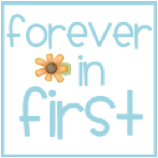I've been on an adventure in math the past two years. It's stretched my thinking and it's been a lot of work, but it's all worth it when I watch my mathematicians think more clearly and comprehensively about math than ever before. The way they can solve what I would have previously considered second grade problems amazes me. They are capable of more than I could have ever imaged. I've blogged quite a bit about it. Click on the collage below if you're interested in hearing more.
I've learned how powerful it is when students invent strategies for solving problems instead of being explicitly taught them. (I'm sorry if that sounds absolutely crazy. I've blogged about the process, otherwise I'd go into more detail.) One of the questions that teachers like myself ask when thinking about this approach is "What do you do when there's a strategy that would be beneficial to your mathematicians, but no one is inventing it?" I have found that there are often students in the crowd who have sophisticated strategies but don't have a method for documenting them. They just need someone to match a method to their explanations.
I have an example of this that's fresh in my mind from the last week of school. We were doing some morning math on the board. (We do a math problem with the lunch count every day. Yep, I've posted about this too.) Most mornings the kids work out the problem on their whiteboards, but for sake of time, I asked for various strategies while I drew their thinking on the board. Madison began describing her strategy, and I instantly knew she was using arrow language which was a new strategy for us all. While she described her thinking, I drew it using this new method. When finished, I was sure to ask her, "Is this what you were thinking?" because I didn't want to put words in her mouth. She agreed that it matched her thoughts, and boy was she was thrilled that she had invented a new strategy. We called it Madison's Way.
We added Madison's Way to the many other ways that my mathematicians invented throughout the year. These kids are going to take so many different problem solving strategies into second grade with them, and the best part is that they understand what they're doing because they're the inventors. This is such an exciting way to learn and to teach math!
Thanks Casey for having me. It was a pleasure hanging out with your friends today!




I enjoy seeing the new ways your students come up with the answers to problems. And by showing everyone how different ones arrive at the end must help some of the others with their thinking too!
ReplyDeleteLori
Conversations in Literacy
Thanks Lori. I definitely agree. It helps everyone. They have such great strategies to share with each other.
DeleteI think my favorite part is that you don't call it the "arrow" strategy- you call it "Madison's" strategy. I know my kids beam sharing their work with each other- but I can only imagine how they beam to have their way named after them!
ReplyDeleteThanks for sharing :)
Jenny
Luckeyfrog's Lilypad
Jenny, yep there's lots of beaming when a strategy is named after one of our mathematicians. The other kids have an easier time remembering names of strategies too. They might not remember "arrow language" but they do remember "Madison's Way."
DeleteI love Madison's Way! I also love that you name the strategies with your kids in ways that are meaningful to them. I need to reread VandeWalle's book this summer!
ReplyDelete❀Barbara❀
Grade ONEderful
Ruby Slippers Blog Designs
Barbara, I just finished reading it a few weeks ago, but I've a feeling I'll need to look at it over and over all through the year. It's so good.
Delete